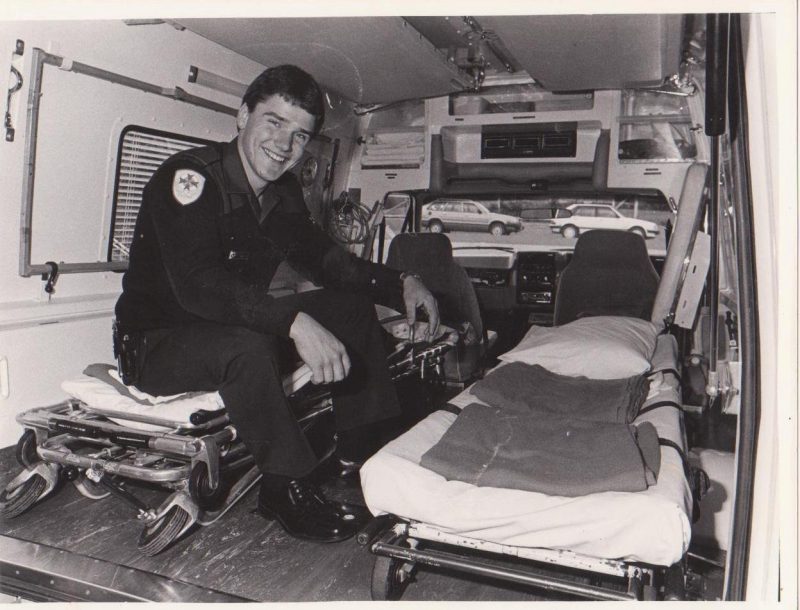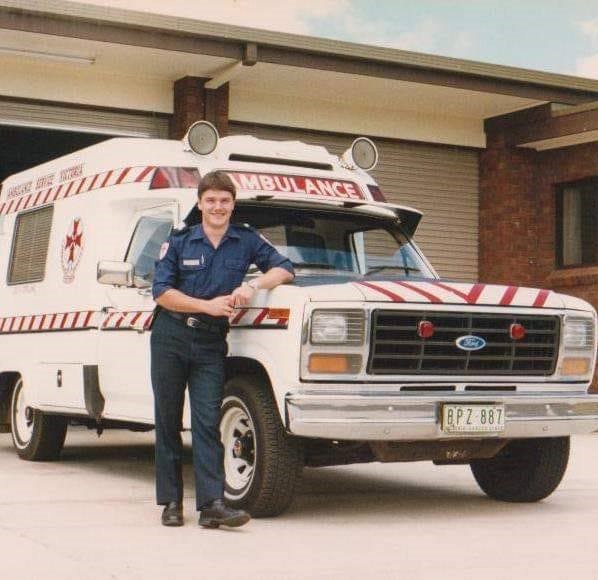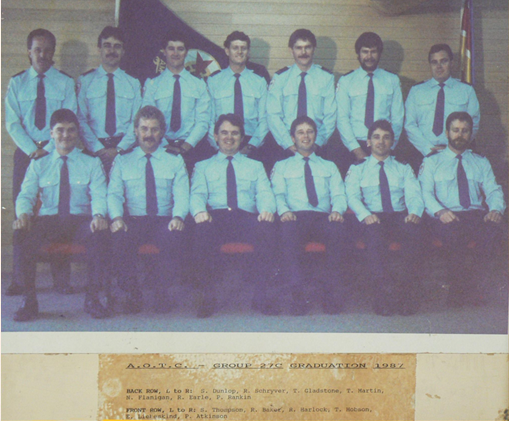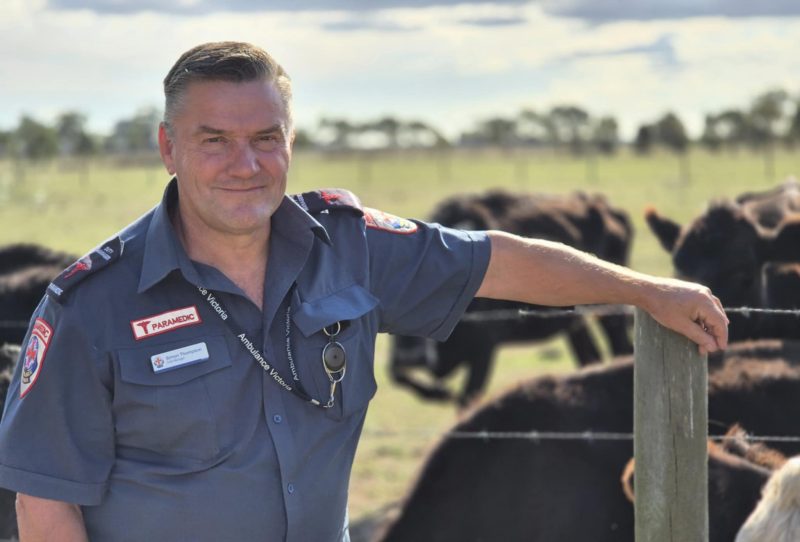“I loved my job from day one” – Duty Manager reflects on four decades in ambulance
April 15, 2025in News
Across four decades at Ambulance Victoria (AV), Simon Thompson has done it all.
He’s been an Ambulance Officer, Paramedic, single responder, Call Taker, Team Manager, Clinical Instructor and, finally, a Duty Manager (DM) in AV’s communications centre.
It was a matter of good timing that kickstarted Simon’s ambulance career in 1985.

Simon in an ambulance in Leongatha in 1985, the year he began his ambulance career.
He was working as a landscape gardener and in the process of joining the Metropolitan Fire Brigade when that was delayed.
Simon was also planning a move to Foster North, where he had purchased a block of land, and it was in town at Foster that he first drove past an ambulance branch and considered a different career.
“I had an immediate attraction to how good a career in ambulance would be,” Simon said.
“I wrote to three ambulance services, because at the time there were 16 separate ambulance services across the state, and I managed to get a position as a Student Ambulance Officer at South Gippsland District Ambulance Service (SGDAS).
“I loved my job from day one.”
After 18 months, Simon took on a role as a Regional Reliever, working at smaller branches across Gippsland as a single responder.
“Back then people didn’t call Triple Zero (000), they rang their local ambulance station directly,” Simon said.
“As a result, I became a call taker too.”

Simon at the Cowes Ambulance Branch in 1986.
In the early days of his career, Simon attended one of his most memorable cases.
It was the late 1980s and cardiac monitors and defibrillators were just being introduced – a far cry from their prevalence today.
Simon had only recently been trained to use them when he was called to a man in cardiac arrest on a farm.
“I was working on my own and arrived to see a young lady performing cardiopulmonary resuscitation (CPR) on her father,” he said.
“With an Oxysaver and cardiac monitor, I traipsed down to them in the wet and gave six defibrillations to the man as well as CPR, then he finally had a palpable pulse and some spontaneous respirations.
“The next morning, I called into the hospital and was able to meet the man, sitting up in bed having breakfast.”
In 1990, Simon transferred to the Metropolitan Ambulance Service, gaining experience as an Assistant Station Officer and Clinical Instructor, before being appointed Pakenham Team Manager later in the decade.
In that role, Simon became interested in improving the way patient care was supported by the communications centre, so his manager began organising some time where Simon could visit and learn about how the centre operated.

Simon (front row, first on left) at his Ambulance Officers Training Centre graduation in 1987.
But when he was contacted, it wasn’t to visit, he was offered a spot to commence training as a DM.
DMs are qualified paramedics whose role includes monitoring demand for ambulances, staff welfare, incident management, monitoring hospital activity and transfer times, and coordinating meal breaks and end of shift for on-road staff.
“It was never part of my plan to work in communications, but I felt very privileged to be given the opportunity to expand my skill set so I thought I would give it a go,” Simon said.
“As it turned out, I really enjoyed the role and for the next 20 years I was a relieving DM while remaining the Pakenham Team Manager.
“At that time, there were no Communications Support Paramedics or Administration Support Officers like there are today, so the DMs and Clinicians were responsible for almost everything communications related except call taking and dispatch.”
Simon was officially appointed as a DM in 2020.
Reflecting on 40 years in the job, Simon said he has no doubt he chose the right career.
“Of course there have been some bad days, but the majority, by far, are great days,” he said.

Simon at work at the Phillip Island Circuit in 1990.
“Work has been challenging, rewarding, enjoyable and exciting.
“My colleagues also play a big part in why I keep turning up – I work with a group of talented people who each bring something to the table and together we get the job done.
“There are a few people I’d like to thank – Gary Bartram was the Assistant Superintendent of SGDAS and I sincerely thank him for giving me the opportunity to do this job; while training I was strongly influenced by the high standard set by Ambulance Officers Training Centre Instructor David Shugg; and on-road Ian Patrick and Dave Llewelyn maintained that level.
“Mostly I want to thank my family who have put up with me not being there so often, missing birthdays and sporting events, and waking them up at all hours of the night going out on call – it hasn’t always been easy.”
Simon currently lives on a farm in Caldermeade with his wife and has four children and four grandchildren.
He said at this stage, retirement isn’t on the cards.
“To have the skills and means to be able to assist people in their time of need as a career is an honour,” Simon said.
“While I continue to enjoy what I’m doing and feel like I can contribute something, I’ll keep turning up.
“It’s a job that’s going to be difficult to walk away from.”

Simon Thompson in 2025.
